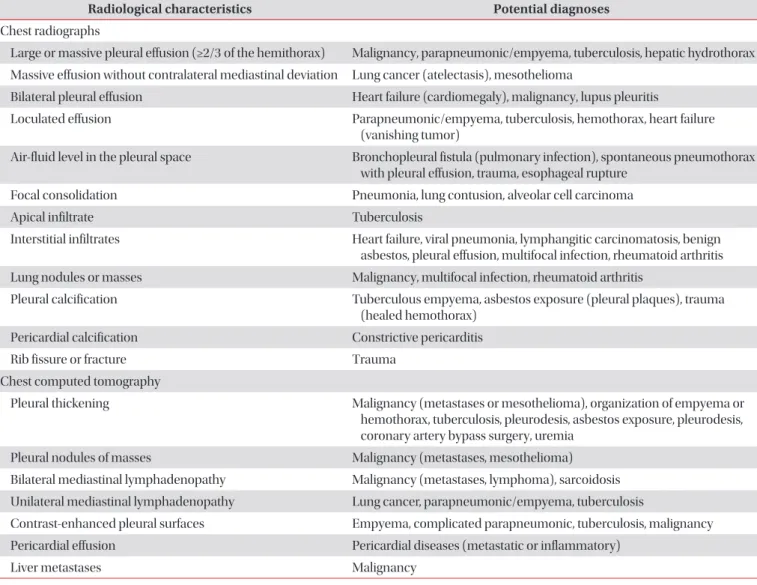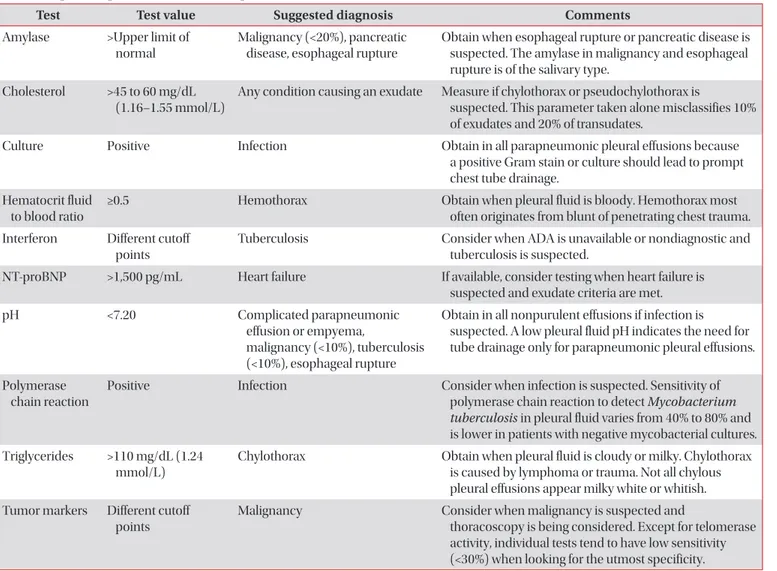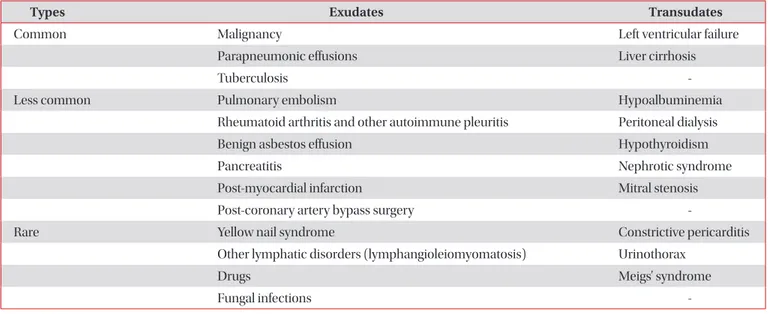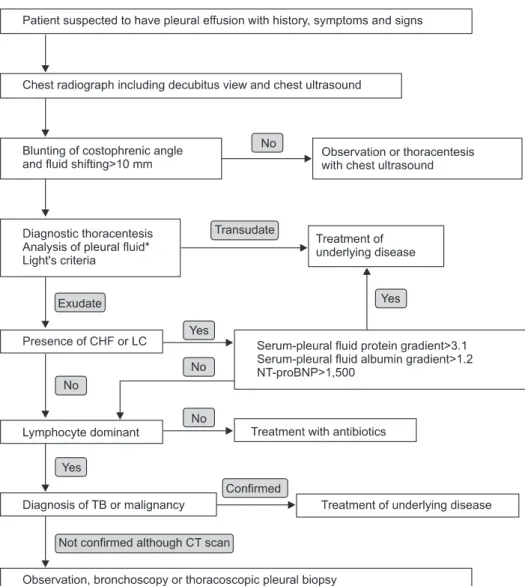Diagnostic Tools of Pleural Effusion
Moon Jun Na, M.D., Ph.D.
Respiratory Division, Department of Internal Medicine, Konyang University College of Medicine, Daejeon, Korea
Pleural effusion is not a rare disease in Korea. The diagnosis of pleural effusion is very difficult, even though the patients often complain of typical symptoms indicating of pleural diseases. Pleural effusion is characterized by the pleural cavity filled with transudative or exudative pleural fluids, and it is developed by various etiologies. The presence of pleural effusion can be confirmed by radiological studies including simple chest radiography, ultrasonography, or computed tomography. Identifying the causes of pleural effusions by pleural fluid analysis is essential for proper treatments. This review article provides information on the diagnostic approaches of pleural effusions and further suggested ways to confirm their various etiologies, by using the most recent journals for references.
Keywords: Pleural Effusion; Pleurisy; Diagnosis
The first step of differential diagnosis or determination of pathogenesis for pleural fluid is to determine whether the patient has a transudative or exudative pleural effusion
2. Transudates are caused by increased hydrostatic pressures (e.g., heart failure), decreased oncotic forces (e.g., hypopro- teinemia), increased negative intrapleural pressure (e.g., atel- ectasis), or movement of ascitic fluid through the diaphragm (e.g., hepatic hydrothorax). In contrast, exudates are due to the increased capillary permeability and/or impaired lymphatic drainage which results from the proliferative (e.g., malignancy) or inflammatory (e.g., parapneumonic effusions) processes
3.
This article aims to review the history taking and the physi- cal examinations of patients who were suspected to have symptoms and signs of pleural effusions, to provide precise ra- diological approaches including thoracic ultrasonography for diagnosing the presence of pleural effusions, and to diagnose the different causes of effusions by using the thoracentesis and pleural biopsy.
History, Symptoms and Signs
The clinical history, symptoms and signs may be very help- ful for evaluating many causes of the pleural effusions (Table 2)
3. Especially, because the effusion by drugs is misdiagnosed, the clinical history which includes the medication history is important. If the causes of pleural effusions are suspected to by drugs, such drug list can be easily found in http://www.
pneumothox.com.
Copyright © 2014
The Korean Academy of Tuberculosis and Respiratory Diseases.
All rights reserved.
Introduction
The mean amount of pleural fluid in the normal is as small as 8.4±4.3 mL. Fluid that enters the pleural space can originate in the pleural capillaries, the interstitial spaces of the lung, the intrathoracic lymphatics, the intrathoracic blood vessels, or the peritoneal cavity. Pleural fluid is usually absorbed through the lymphatic vessels in the parietal pleura by means of stomas in the parietal pleura, or through the alternative tran- scytosis
1. But various pathogenic mechanisms increase the amount of pleural fluids by increasing the rates of pleural fluid formation exceeding the rate of pleural fluid absorption (Table 1)
1.
Address for correspondence: Moon Jun Na, M.D., Ph.D.
Division of Pulmonology, Department of Internal Medicine, Konyang University College of Medicine, 158 Gwanjeodong-ro, Seo-gu, Daejeon 302-718, Korea
Phone: 82-42-600-8821, Fax: 82-42-600-9090 E-mail: mjnamd@hanmail.net
Received: Mar. 28, 2014 Revised: Apr. 4, 2014 Accepted: Apr. 11, 2014
cc It is identical to the Creative Commons Attribution Non-Commercial License (http://creativecommons.org/licenses/by-nc/3.0/).



